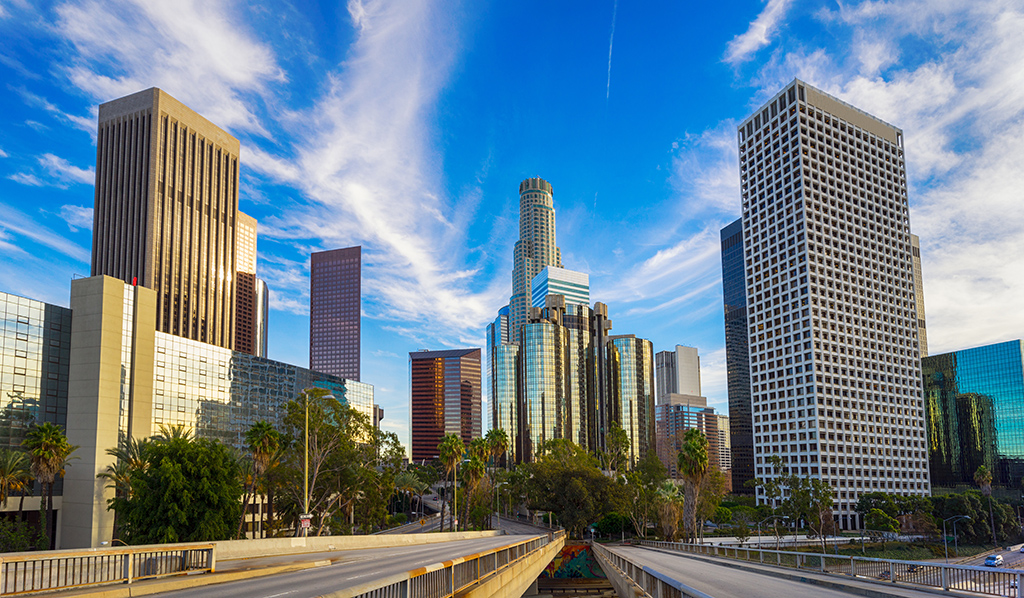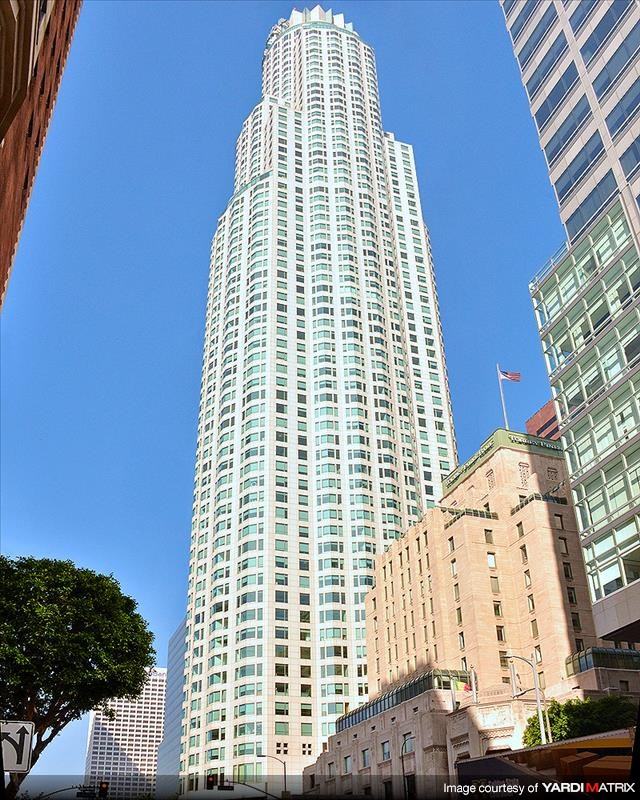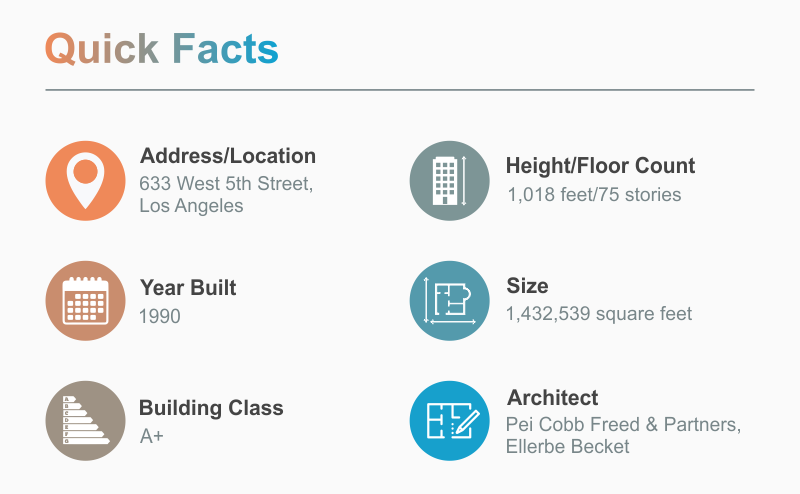The U.S. Bank Tower is a 75-story, 1,018-foot tall skyscraper that dominates the Los Angeles skyline. It’s often called the Library Tower by locals because of its association with the historic Central Library of Los Angeles, which sits across the street from it.
Now the third-tallest building in California and the second-tallest in L.A., the U.S. Bank Tower is predominantly used for work, with 66 floors dedicated to office space.
In 2013, the U.S. Bank Tower was sold to OUE, which is “a diversified real estate owner, developer, and operator dedicated to bringing new life to iconic buildings and communities across the globe,” according to the company’s website.
OUE has since invested nearly $100 million in renovating and improving the building. There’s a retail space with restaurants, cafes and bars, gym and the OUE Skyspace LA observation deck, which offers a range of experiences, including a 45-foot, fully enclosed transparent slide that’s 1,000 feet above the ground. The ground floor lobby also had a makeover and there’s now a separate entrance for tourists on the second floor. The U.S. Bank Tower also features a large glass crown, which is illuminated at night in a range of colors, to signify different seasons and holidays.
This January, OUE has decided to part ways with the iconic tower and has put it up for sale. According to the Los Angeles Times, U.S. Bank Tower could fetch as much as $700 million, or roughly $500 per square foot.
Designing an Icon
The U.S. Bank Tower was completed in 1990. It was part of a wider redevelopment project following two serious fires at the Central Library in 1986.
Originally called the Library Tower, its name has changed over the years. Different banks have owned the skyscraper, which has gone under the names “First Interstate Bancorp” and “First Interstate Bank World Center.”
The U.S. Bank Tower is built in a seismically active area and was designed by Henry Cobb to withstand an earthquake of up to 8.3 on the Richter scale. The San Andreas Fault is 26 miles away and cannot produce a quake greater than 8.0. Before the completion of the Taipei 101 tower in 2004 in Taiwan, the U.S. Bank Tower was the tallest building located in an earthquake zone.
The tower has a heavily reinforced central core, surrounded by lighter columns to create a flexible framework that can withstand both high winds and seismic activity. The design is based on overlapping geometries–it has no spires or antennae–and at the top of the tower, you’ll find a helipad. It was the world’s tallest building with a helipad on its roof, until the completion of the China World Trade Center Tower III, which was subsequently superseded by the Guangzhou International Finance Center.
The iconic downtown L.A. staple was also the first structure to be “destroyed” by an alien spacecraft in the opening scenes of the film Independence Day, where revelers mistakenly gathered on the helipad to welcome what they assumed was a friendly alien race.












